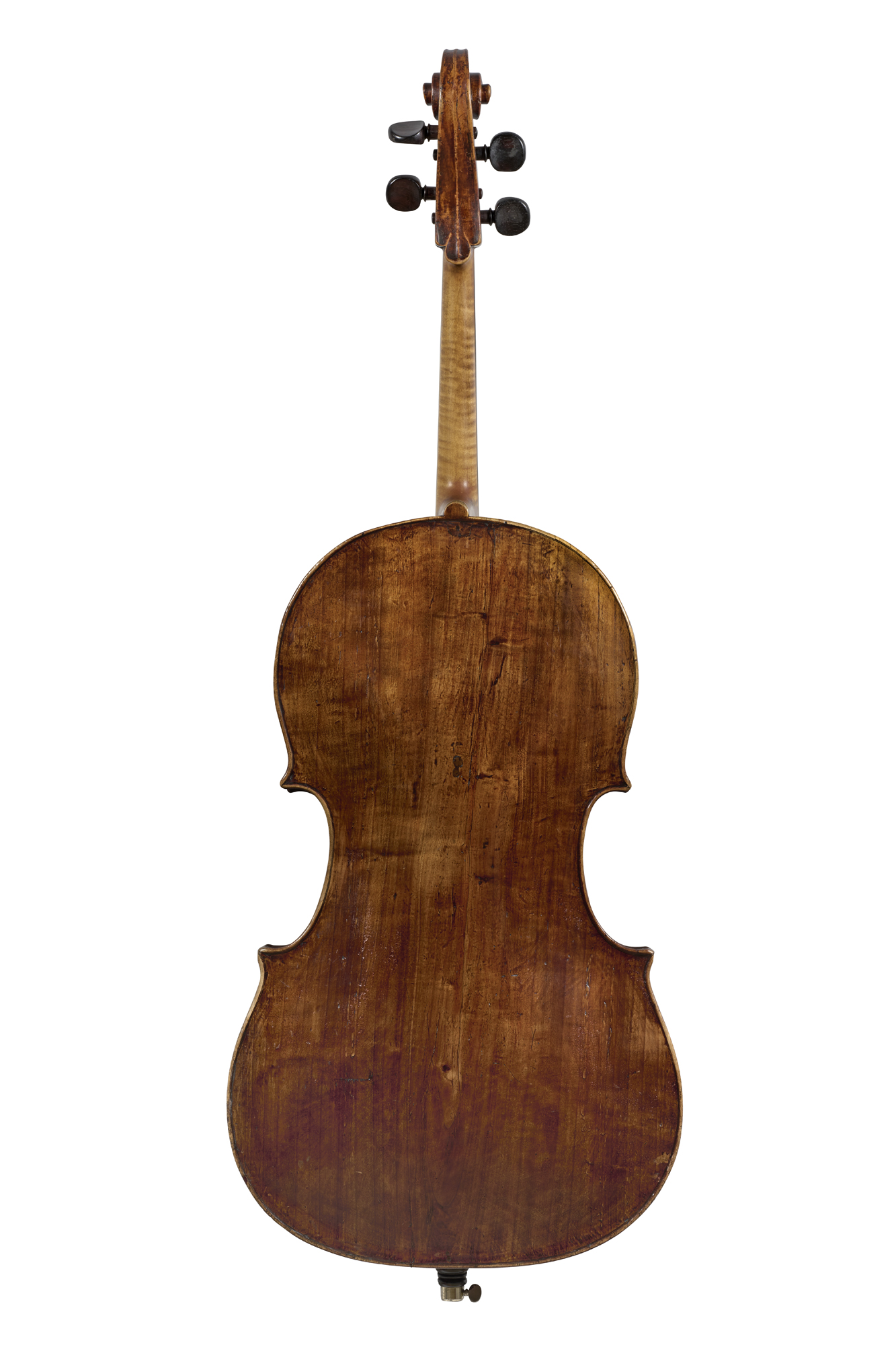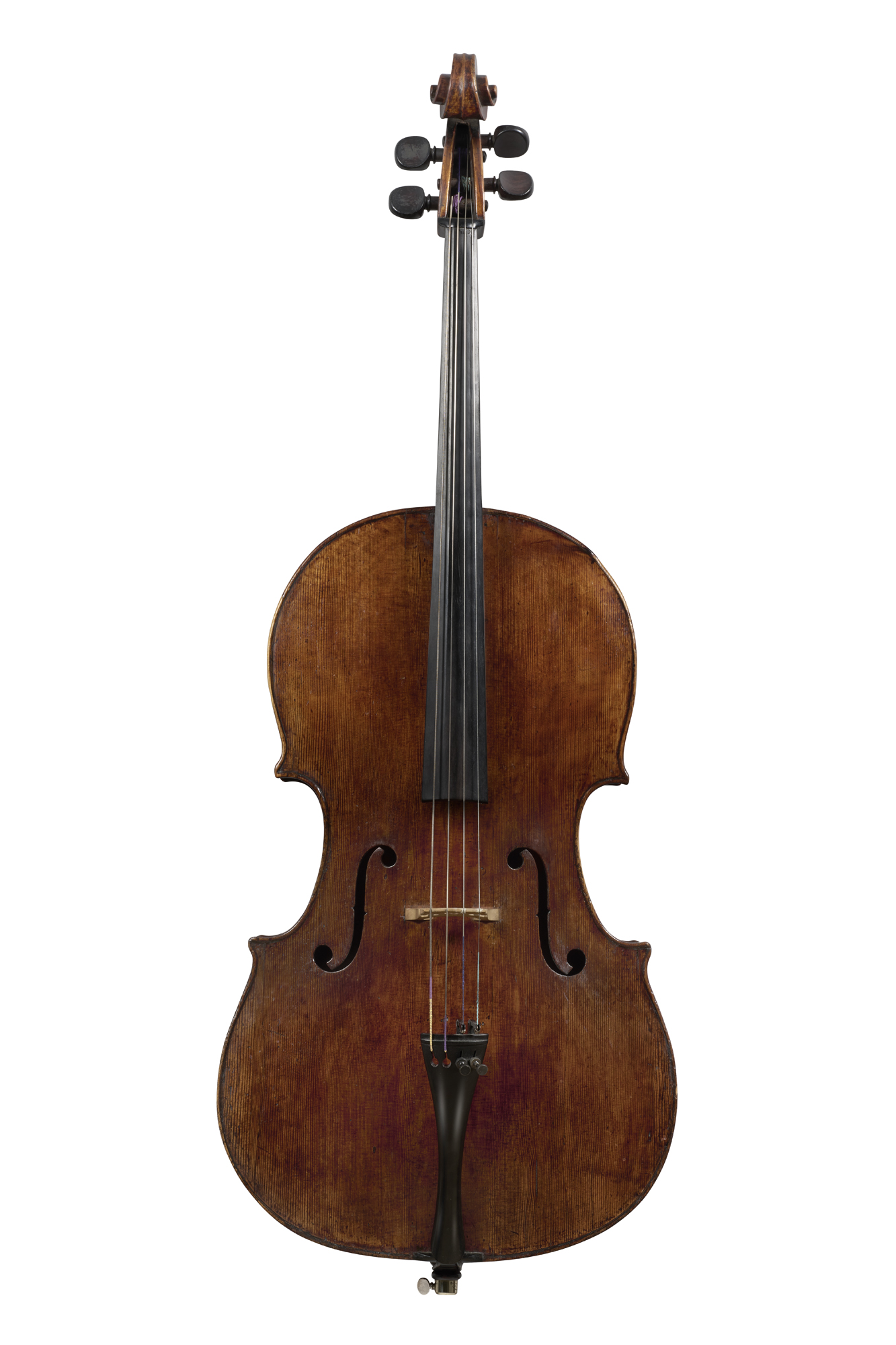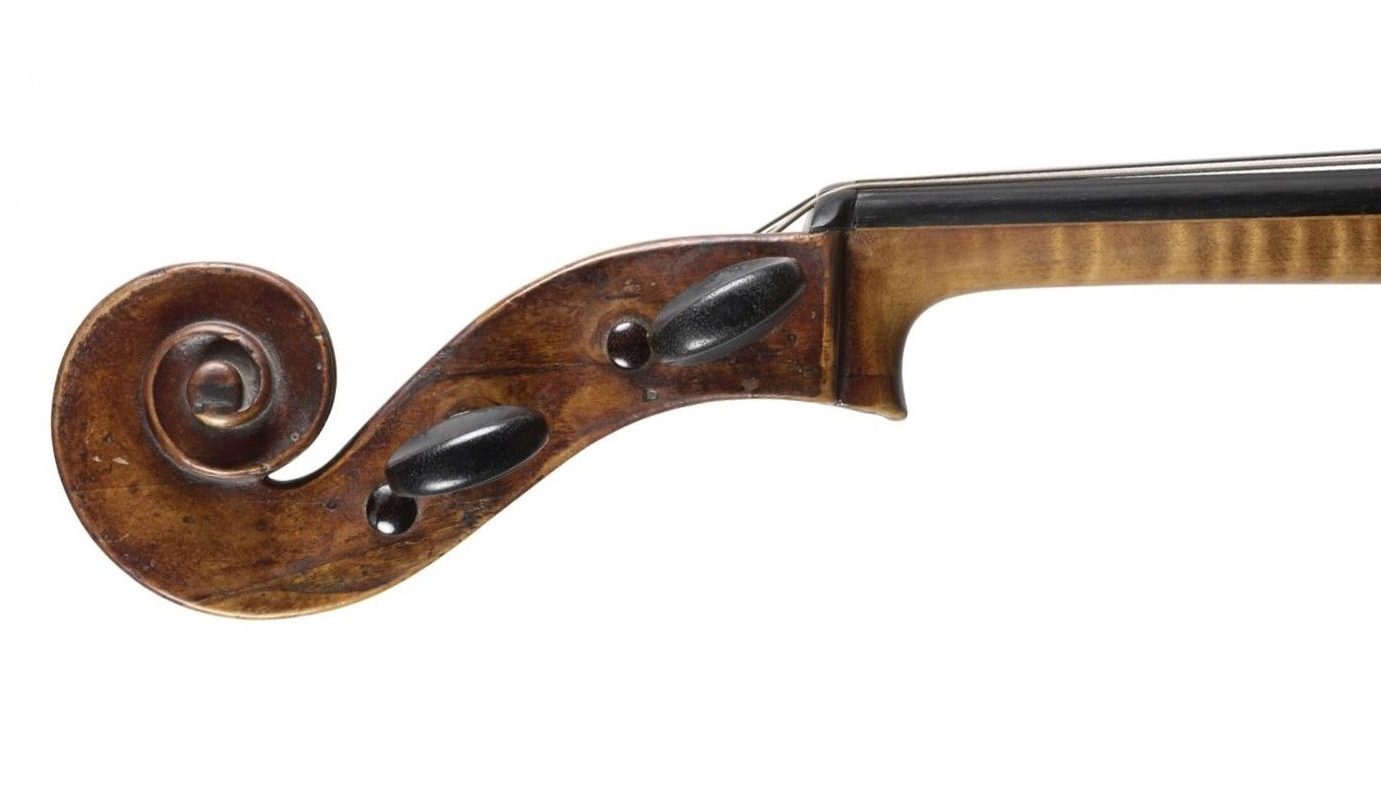Sub Disciplina Andreę Guarnerij in eius Officina
John Dilworth examines a cello by Giuseppe Guarneri ‘Filius Andreæ’
This splendid cello is remarkable in many ways. It has the full unmistakeable impact of a great Cremonese instrument and is in a very rare, virtually unrestored, condition which says immediately that it has been hidden away for some time and almost certainly contains many stories of ownership and wanderings. The varnish is in that lovely dry, unpolished state that has not changed a great deal in the last two hundred years; it has been rubbed and worn it is true, but this degree of preservation in a seventeenth century cello is indeed remarkable.
The label itself is a gem. Pristine and original, it modestly states ‘Sub disciplina Andreę Guarnerij in eius Officina / sub Titulo S.Teresię Cremonę 1693’ (‘under the supervision of Andrea Guarneri in his workshop / under the sign of St. Theresa’). This is a rare example, showing that the cello was made by Andrea Guarneri’s son Giuseppe, who we now know as ‘filius Andreæ’. Thus, it was made when Giuseppe was 27 and his father Andrea was 70, five years before his death in 1698. Although there are several cellos attributed to Andrea alone in this period, it is acknowledged that Giuseppe would have had some hand in them as well. A cello is, after all, quite an undertaking for an elderly man.
The cello has a bold, broad outline. The soft grain rises in short ripples under the varnish, the result of a swift finishing process with scrapers.
What is fascinating about this cello is that the hand and the style are uniquely Giuseppe’s. He was obviously given free rein on this occasion to work to his own model and in his own way in the family workshop, identified to passers-by as ‘under the sign of St. Theresa’, which probably swung above the door. Five years later the workshop belonged to Giuseppe, and the same sign probably hung there until his own death in 1740.
Significantly the cello is in its original uncut form, made on the modern, smaller back length of 740mm. This innovation might be shared between Francesco Rugeri and Giuseppe Guarneri at around this time, and it marks an important step in the development of the cello, one that Stradivari did not take for another fourteen years.
The cello has a bold, broad outline and the back is made from poplar wood, which has a very distinctive texture. The soft grain rises in short ripples under the varnish, the result of a swift finishing process with scrapers. Although there are cracks to be seen internally, there is little sign of any other disturbance to the fabric of the cello. It is indeed rare to look inside a great instrument like this and see so much of the original surface of the wood; it may be that it has only been opened once in its long life. Similarly, the inside of the front is as unperturbed as the back.
The scroll is majestic – in Giuseppe’s own robust style, almost Stradivarian in poise and concentricity
The scroll is majestic – in Giuseppe’s own robust style, almost Stradivarian in poise and concentricity compared to Andrea’s more deeply scoured and Amatise model. Similarly, the remarkably intact edgework of the whole instrument has a stouter proportion than his father’s more delicately turned channels.
Remarkable in many ways, this cello marks the transition between father and son, between the old grand patterns and the new, nimble virtuosos’ instrument, and has apparently enjoyed a gentle passage through more than three hundred years.
Recent Posts
Categories
- Feature Type
- Instrument Type
-
Maker
- Albani, Mathias (2)
- Amati, Andrea (8)
- Amati, Antonio & Girolamo (6)
- Amati, Girolamo II (6)
- Amati, Nicolò (6)
- Balestrieri, Tommaso (3)
- Banks, Benjamin (1)
- Bazin, Charles Nicolas (1)
- Bergonzi Family (1)
- Bergonzi, Carlo (2)
- Bergonzi, Michele Angelo (2)
- Bernardel, Auguste Sébastien Philippe (2)
- Bisiach, Leandro (2)
- Bultitude, Arthur Richard (1)
- Camilli, Camillo (2)
- Cappa, Gioffredo (2)
- Carcassi, Lorenzo & Tomaso (1)
- Ceruti, Giovanni Battista (3)
- Chanot, George Adolph (1)
- Cuypers, Johannes Theodorus (1)
- Dalla Costa, Pietro Antonio (1)
- Deconet, Michele (1)
- Fendt, Bernard Simon II (1)
- Fendt, Bernhard Simon I (1)
- Gabrielli, Giovanni Battista (1)
- Gagliano, Alessandro (2)
- Gagliano, Ferdinando (1)
- Genova, Giovanni Battista (1)
- Gisalberti, Andrea (1)
- Goffriller, Francesco (1)
- Goffriller, Matteo (1)
- Grancino, Giovanni (4)
- Grancino, Giovanni Battista II (1)
- Guadagnini, Gaetano II (1)
- Guadagnini, Giovanni Battista (7)
- Guarneri 'filius Andreæ', Giuseppe (3)
- Guarneri del Gesù, Giuseppe (5)
- Guarneri of Mantua, Pietro Giovanni (2)
- Guarneri of Venice, Pietro (3)
- Guarneri, Andrea (3)
- Götz, Conrad (1)
- Hill & Sons, W.E. (1)
- Kennedy, Thomas (1)
- Knopf, Carl Heinrich (1)
- Lott, John Frederick (1)
- Lupot, Nicolas (2)
- Mantegazza, Pietro Giovanni (2)
- Mariani, Antonio (1)
- Montagnana, Domenico (2)
- Panormo, Vincenzo Trusiano (1)
- Parker, Daniel (1)
- Peccatte, Dominique (1)
- Platner, Michele (1)
- Pressenda, Giovanni Francesco (1)
- Rayman, Jacob (1)
- Retford, William Charles (1)
- Rivolta, Giacomo (1)
- Rocca, Giuseppe Antonio (2)
- Rota, Giovanni (1)
- Rugeri, Francesco (3)
- Sartory, Eugène (1)
- Scarampella, Stefano (2)
- Schwartz, George Frédéric (1)
- Serafin, Santo (1)
- Sgarabotto, Gaetano (1)
- Sgarabotto, Pietro (1)
- Simon, Pierre (1)
- Stainer, Jacob (3)
- Storioni, Lorenzo (3)
- Stradivari, Antonio (14)
- Stradivari, Francesco (1)
- Stradivari, Omobono (1)
- Tadioli, Maurizio (1)
- Taylor, Michael (1)
- Tecchler, David (2)
- Testore, Carlo Giuseppe (1)
- Tourte, François Xavier (4)
- Tubbs, James (1)
- Voller Brothers (1)
- Vuillaume, Jean-Baptiste (10)
- Watson, William (1)
- da Salò Bertolotti, Gasparo (2)
- Author
- Charity
-
In the Press
- Antiques Trade Gazette (3)
- Archi-magazine.it (1)
- Art Daily (2)
- CNN Style (1)
- Classic FM (2)
- ITV (1)
- Ingles & Hayday (3)
- Liberation (1)
- Life Style Journal (1)
- London Evening Standard (1)
- Paul Fraser Collectibles (1)
- Rhinegold Publishing (1)
- Sotheby's (1)
- Strings Magazine (2)
- Tarisio (2)
- The Fine Art Post (1)
- The Strad (7)
- The Times (1)




